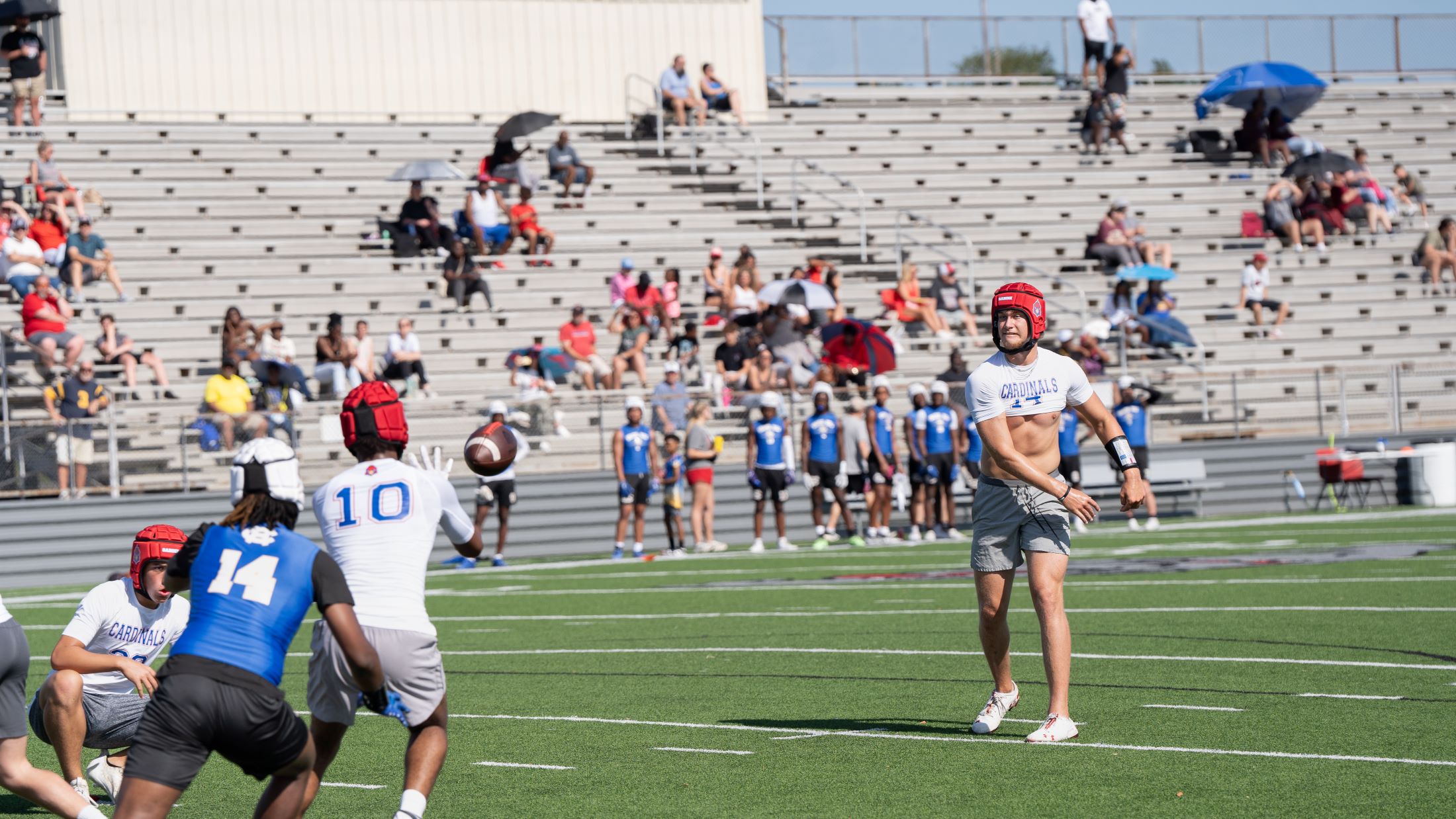AREA 7-ON-7 TEAMS BACK IN ACTION SATURDAY | Another state qualifier at four area stadiums features several ETBlitz programs

Last Saturday, it was a team composed of Kilgore High School players that qualified for the Texas State 7-on-7 Tournament, to be played in College Station next month.
This weekend, teams from four other schools in the ETBlitz.com coverage area will give it another shot.
This time, though, there’s not a central site – Chapel Hill is the official host, but pool play will be at Sabine’s James Bamberg Stadium, at Chapel Hill, at Arp and at Lindale. Games will be played at those four sites, beginning at 9 a.m. Pool games will continue until about 11 a.m., when teams will transition to Chapel Hill’s stadium for semifinal games and the championship game.
As the main host team, Chapel Hill is the site of pool A, which will include the Bulldogs, as well as Emory Rains, Crockett and Bullard.
Pool B is at Sabine, where the Cardinals will host Gladewater, White Oak and Kilgore. Kilgore, having already qualified for College Station’s event, will play just the pool games. Sabine, Gladewater and White Oak will each have a chance to move on to the title game.
Pool C is at Arp, where Henderson, Gilmer, Jefferson and Mexia will meet. And Pool D is at Lindale, and the three other teams are Sunnyvale, Sulphur Springs and Dallas Kimball.

As we did last week, here’s a quick explanation of typical 7-on-7 rules:
Halves are 15 minutes long, with a 10-minute break between.
All plays must be passes. Offenses move in the same direction, and plays with more than one pass aren’t allowed, although laterals are.
Quarterbacks are allowed four seconds – 4 – to throw the ball. If the ball comes out on time, the play continues, obviously. If the ball doesn’t get out before four seconds expires, then the timekeeper waits until the play is complete, then brings the ball back to the line of scrimmage.
Players typically wear soft helmets, not hard-shell, and the eligible playing field is reduced to 45 yards in length, and 160 feet in width (60 feet to has mark and 40 feet between), and the end zone is 10 yards deep.
Like normal football, there is a play clock (40 seconds between plays). There’s no tackling: a receiver, or the player with the ball, is ruled down when touched with one or both hands of a defender. Excessive force is penalized.
Fumbles are ruled dead balls at the spot of the fumble, but interceptions can be returned. Defensive pass interference is the standard 15-yard penalty.
All teams must have a center, but the center isn’t an eligible receiver. The ball does have to be snapped from the ground.
There are no punts. The team on offense must gain at least 15 yards in the first three plays or less, or the defense takes over. The only time there’s a fourth-down situation is when an offense gets inside the 15-yard-line cone.
Teams get six points for a touchdown, like regular football. But there are no extra point kicks, and no field goals. You get one point for a successful conversion from the 3-yard-line, and two points if you’re successful from the 10-yard-line.
In the event of a tie after regulation, there’s a coin flip to determine who has first possession in overtime, and teams alternate four-down series from the 15-yard-line. The first team that scores and then stops the other from scoring in its series is the winning team.
If the game goes to a second overtime or more, teams must go for two-point conversions after touchdowns.
The state 7-on-7 tournament has three divisions: Division I is the equivalent of teams that would be in the 5A or 6A classification, or SPC or TAPPS Division I. Division II is the equivalent of classes 3A-DI and 4A in public school and other private schools, and Division III is made up of teams that would compete in public school classifications 3A-DII and below.
